Chapter 11
The Middle Ages in Europe
By Boundless
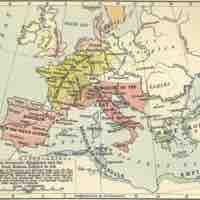
The Germanic tribes, an ancient nomadic civilization, used their superior military strength to lay the foundation for modern Europe.
Odoacer was a Germanic soldier in the Roman army who deposed emperor Augustulus and became the first King of Italy, marking the end of the Western Roman Empire, the fall of ancient Rome, and the beginning of the Middle Ages in Western Europe.
Theoderic the Great was the King of the Ostrogoths and ruler of Italy after defeating the first barbarian king, Odoacer; he ruled Italy in its most peaceful and prosperous period since Valentinian until his death in 526.
Vikings originated in Scandinavia and raided, traded, explored, and settled in wide areas of Europe, Asia, and the North Atlantic islands.
After the fall of the Western Roman Empire in 476, the Catholic Church became a powerful social and political institution and its influence spread throughout Europe.
During the decline and fall of the Western Roman Empire, and throughout the Middle Ages, the office of pope not only gained supremacy over the entire Christian Church but also developed political power rivaling that of the secular rulers of Europe.
Christian monasticism, which consists of individuals living ascetic and often cloistered lives that are dedicated to Christian worship, became popular during the Middle Ages and gave rise to several monastic orders with different goals and lifestyles.
The Western Schism was a prolonged period of crisis in Latin Christendom from 1378 to 1416, when there was conflict concerning the rightful holder of the papacy.
Charlemagne reached the height of his power in 800 when he was crowned Emperor of the Romans by Pope Leo III on Christmas Day at Old St. Peter's Basilica.
Charlemagne is considered the greatest ruler of the Carolingian Dynasty because of the actions he took to bring Europe out of turmoil.
As emperor, Charlemagne stood out for his many reforms—monetary, governmental, military, cultural, and ecclesiastical—and ushered in an era known as the Carolingian Renaissance.
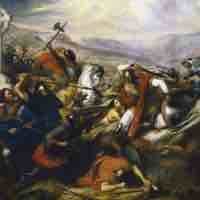
Charles Martels's victory at the Battle of Tours is widely believed to have stopped the northward advance of Muslim forces and to have preserved Christianity in Europe during a period when Muslim rule was overrunning the remains of the old Roman and Persian empires.
After Charlemagne's death in 814, the Carolingian Dynasty began an extended period of fragmentation and decline that would eventually lead to the evolution of the territories of France and Germany.
The formation of the Holy Roman Empire was initiated by Charlemagne's coronation as "Emperor of the Romans" in 800, and consolidated by Otto I when he was crowned emperor in 962 by Pope John XII.
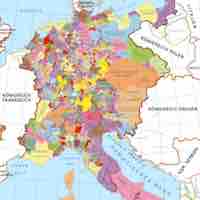
The Holy Roman Empire was divided into dozens—eventually hundreds—of individual entities governed by kings, dukes, counts, bishops, abbots, and other rulers, collectively known as princes, who governed their land independently from the emperor, whose power was severely restricted by these various local leaders.
The Investiture Controversy, on the surface a conflict about the appointments of religious offices, was a powerful struggle for control over who held ultimate authority, the Holy Roman Emperor or the pope.
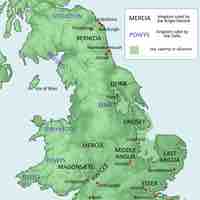
The Anglo-Saxons were a people who inhabited Great Britain from 450 to 1066; their reign saw the creation of a unified English nation, culture, and identity, setting the foundation for modern England.
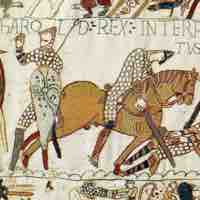
The Norman Invasion of England was led by William II of Normandy, who defeated Harold II of England in the Battle of Hastings in 1066.
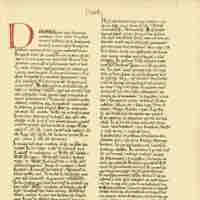
William the Conqueror's rule was marked by struggles to consolidate his hold over England, which led to the compiling of the Domesday Book, a manuscript surveying the land of England in order to understand the holdings of each household.
The Magna Carta was the first document imposed upon a king of England to limit his powers by law and protect civil rights.

The Hundred Years' War was a series of conflicts between the kingdoms of England and France for control of the French throne.

The Crusades were military campaigns sanctioned by the Roman Catholic Church during the High and Late Middle Ages.
The First Crusade (1095–1099) was a military expedition by Roman Catholic Europe to regain the Holy Lands taken in Muslim conquests, ultimately resulting in the recapture of Jerusalem.
The Second Crusade (1147–1149) was the second major crusade launched against Islam by Catholic Europe, started in response to the fall of the County of Edessa founded in the First Crusade; it was largely a failure for the Europeans.
The Third Crusade (1189–1192) was an attempt by European leaders to reconquer the Holy Land from the Muslim sultan Saladin; it resulted in the capture of the important cities Acre and Jaffa, but failed to capture Jerusalem, the main motivation of the crusade.
Crusading became increasingly widespread in terms of geography and objectives during the 13th century and beyond, and crusades were aimed more at maintaining political and religious control over Europe than reclaiming the Holy Land.
Feudalism was a set of legal and military customs in medieval Europe that was determined by the ownership of land.
The manor system was an element of feudal society in the Middle Ages characterized by the legal and economic power of the lord of a manor.
Trade started to expand during the late-13th and early-14th centuries as forms of partnerships and financing began to appear.
During the High Middle Ages, the population of Europe more than doubled, but daily life remained harsh, with risk of disease and illness.
Developments in philosophy and theology and the formation of universities from the 11th century led to increased intellectual activity.
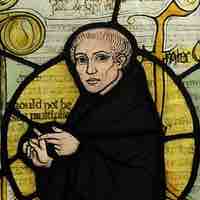
The renaissance of the 12th century was a highly productive time of social, political, and economic transformations, and saw important artistic, technological, and scientific advancements.
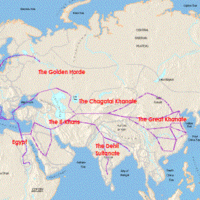
The Black Death was an infamous pandemic of bubonic plague and one of the most devastating pandemics in human history.